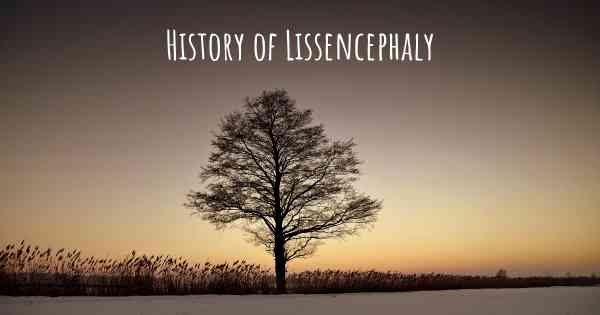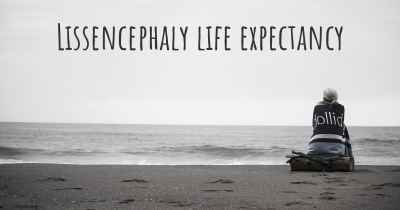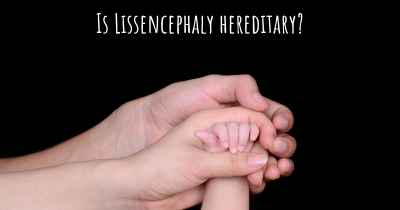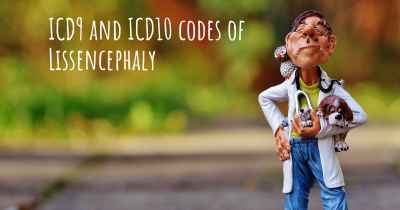What is the history of Lissencephaly?
When was Lissencephaly discovered? What is the story of this discovery? Was it coincidence or not?

Lissencephaly is a rare neurological disorder characterized by the absence or underdevelopment of folds and grooves in the brain's cerebral cortex. The term "lissencephaly" comes from the Greek words "lissos" meaning smooth and "enkephalos" meaning brain. This condition is also known as "smooth brain" due to the lack of normal brain convolutions.
Historical Background:
The history of lissencephaly dates back to the late 19th century when it was first described by French neurologist Dr. Louis L. Weil in 1879. Dr. Weil observed the condition in a 6-year-old boy who had severe developmental delays and intellectual disabilities. He noted the absence of normal brain convolutions and named the condition "agyria," meaning absence of gyri.
Further advancements in understanding lissencephaly occurred in the early 20th century when German neurologist Dr. Franz Nissl conducted extensive research on brain pathology. Dr. Nissl's work focused on studying the microscopic structure of brain tissue, including abnormalities found in various neurological disorders. His research contributed to the understanding of lissencephaly at a cellular level.
Classification and Genetic Discoveries:
In the mid-20th century, lissencephaly was classified into two main types based on the severity of brain malformation. Type I, also known as classical lissencephaly, is characterized by a complete absence of brain convolutions. Type II, known as cobblestone lissencephaly, is characterized by a partially formed cortex with irregular, cobblestone-like surface.
Advancements in genetic research in the late 20th century led to significant discoveries regarding the underlying causes of lissencephaly. In the 1990s, researchers identified the first gene associated with lissencephaly, called LIS1 (PAFAH1B1). Mutations in the LIS1 gene were found to be responsible for a majority of cases of classical lissencephaly. This breakthrough provided crucial insights into the genetic basis of the disorder.
Subsequent studies revealed additional genes associated with lissencephaly, including DCX (doublecortin) and RELN (reelin). Mutations in the DCX gene were found to cause a form of lissencephaly known as X-linked lissencephaly with abnormal genitalia (XLAG), which predominantly affects males. Mutations in the RELN gene were associated with a rare form of lissencephaly called lissencephaly with cerebellar hypoplasia.
Advancements in Diagnosis and Treatment:
Over the years, advancements in medical imaging techniques have greatly improved the diagnosis of lissencephaly. Magnetic resonance imaging (MRI) has become a valuable tool in visualizing the brain's structure and identifying the characteristic smoothness of the cerebral cortex. Prenatal diagnosis through ultrasound and genetic testing has also become possible, allowing parents to make informed decisions and receive appropriate support.
Unfortunately, there is currently no cure for lissencephaly. Treatment primarily focuses on managing symptoms and providing supportive care. Early intervention therapies, such as physical, occupational, and speech therapy, can help improve motor skills, communication, and overall quality of life for individuals with lissencephaly.
Current Research and Future Perspectives:
Ongoing research continues to shed light on the complex genetic mechanisms underlying lissencephaly. Scientists are exploring potential gene therapies and targeted treatments to address the specific genetic mutations associated with the disorder. Additionally, advancements in stem cell research hold promise for developing new therapeutic approaches to stimulate brain development and potentially restore normal brain structure in individuals with lissencephaly.
Furthermore, support networks and advocacy groups have emerged to raise awareness about lissencephaly and provide resources for affected individuals and their families. These organizations play a crucial role in promoting research, supporting affected individuals, and fostering a sense of community.
In conclusion, lissencephaly is a rare neurological disorder characterized by the absence or underdevelopment of brain convolutions. Its history dates back to the late 19th century when it was first described by Dr. Louis L. Weil. Advancements in genetic research have led to the identification of several genes associated with lissencephaly, providing valuable insights into its underlying causes. While there is currently no cure, advancements in diagnosis and supportive care have improved the management of the disorder. Ongoing research and support networks offer hope for future advancements in understanding and treating lissencephaly.








